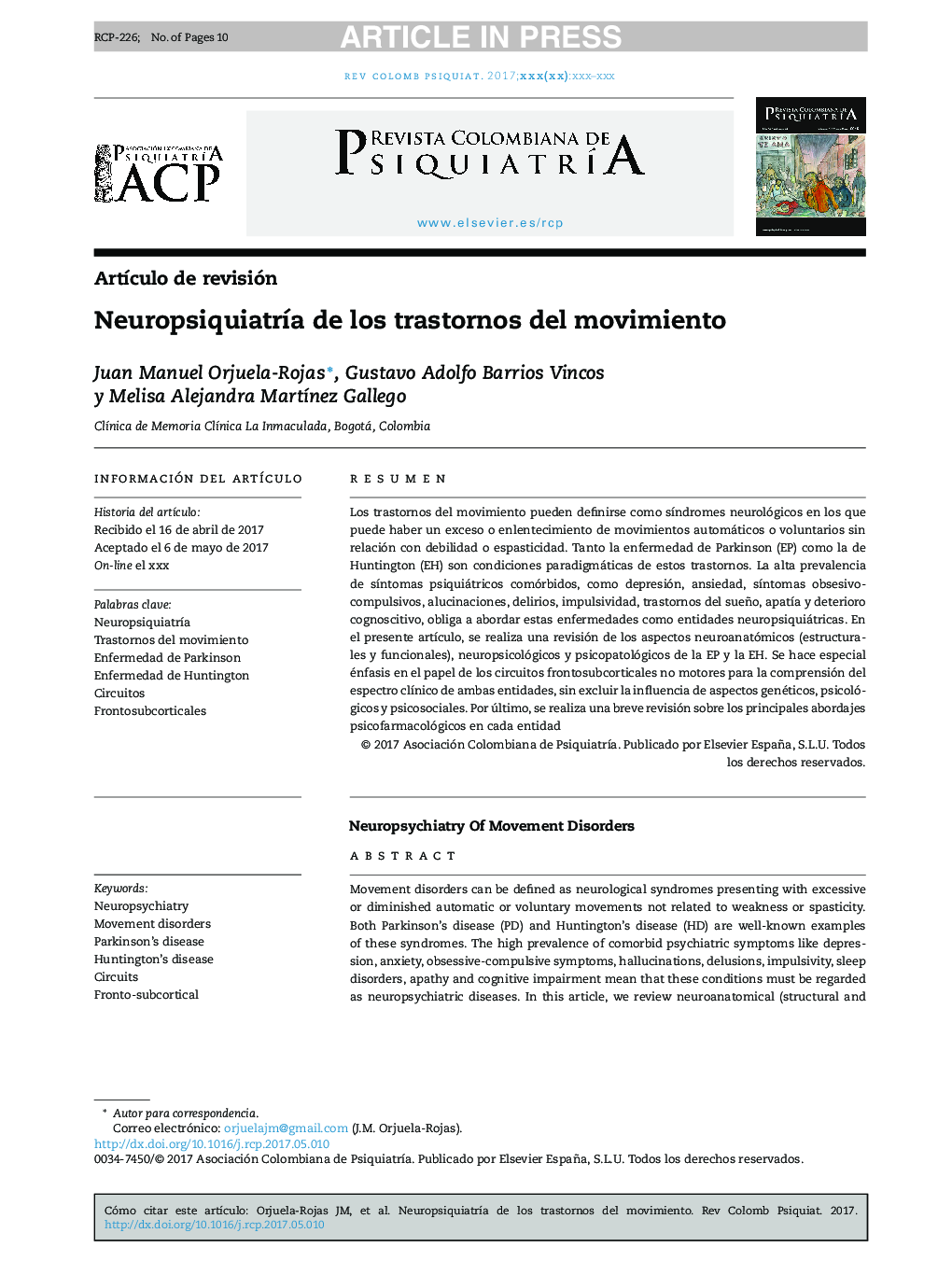| Article ID | Journal | Published Year | Pages | File Type |
|---|---|---|---|---|
| 5722701 | Revista Colombiana de Psiquiatría | 2017 | 10 Pages |
Abstract
Movement disorders can be defined as neurological syndromes presenting with excessive or diminished automatic or voluntary movements not related to weakness or spasticity. Both Parkinson's disease (PD) and Huntington's disease (HD) are well-known examples of these syndromes. The high prevalence of comorbid psychiatric symptoms like depression, anxiety, obsessive-compulsive symptoms, hallucinations, delusions, impulsivity, sleep disorders, apathy and cognitive impairment mean that these conditions must be regarded as neuropsychiatric diseases. In this article, we review neuroanatomical (structural and functional), psychopathological and neuropsychological aspects of PD and HD. The role of fronto-subcortical loops in non-motor functions is particularly emphasised in order to understand the clinical spectrum of both diseases, together with the influence of genetic, psychological and psychosocial aspects. A brief description of the main psychopharmacological approaches for both diseases is also included
Keywords
Related Topics
Health Sciences
Medicine and Dentistry
Psychiatry and Mental Health
Authors
Juan Manuel Orjuela-Rojas, Gustavo Adolfo Barrios Vincos, Melisa Alejandra MartÃnez Gallego,
